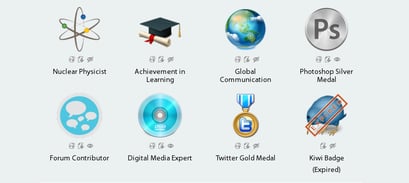Digital learning is continuing to make headway in K-12 classrooms with different technology models being openly adopted by school district leaders. The list of trends cover a wide range of new strategies, from blended learning, flipped classrooms and gamification to remote learning, and digital textbooks.
However, the latest “NMC Horizon Report: 2015 K–12 Edition” is showing us some new variations to the future of K-12 classroom technology. Showcasing a few surprises, the list included many new additions but also revealed some popular trends dropping off completely.
Could these changes mean a radically different future for the K-12 technology landscape than what we're seeing today? Check out these 5 surprising changes and decide for yourself.
1. 3D Printing Takes The Frontlines
3D printing is the biggest prediction that's already started to make a huge impact. It is projected to become a significant classroom technology tool in future K-12 schools, which may be largely due to the expected increase in 3D printers (more than 500% from 2013-2018).
Can you imagine being able to print an object to show your students in lieu of just a picture? Think of your old anatomy teacher printing a replica of a human heart to explain chambers, ventricals, and arteries, pretty impressive!

“To be able to draft something with 3D CAD software and then physically output it is a tremendous complement to these programs,” says Pete Basiliere, research vice president at Gartner. “3D printers in the schools help students think creatively. It’s a whole new medium with a new range of possibilities.”
2. Makerspaces Enter The Game
Makerspaces are community centers that have been revamped with classroom technology tools. Also called digital fabrication labs or innovation labs, this new trend didn’t make Horizon’s 2014 list at all, but has popped up under the “one to two years” category in 2015.
The projected growth of markerspaces will be largely due to the impeding adoption of 3D printers in schools that will need dedicated workspaces for classes experimenting with hands-on technologies.
3. Gamification Drops Off The List
Gamification has declined in popularity recently and probably won't hit mainstream status anytime soon. This is mostly due to the concepts being too hard to integrate and the lack of tools to help make it any easier.
However, a possible substitute to gamified learning would be Digital Badges, which have made it onto this year's list and is pegged to hit mainstream adoption within four to five years.
These are digital images of a “badge” that a teacher may award a student upon completion of certain tasks. These digital badges can be collected and even shared on social media. Think beyond boyscouts and look at them as an accomplishment in a subject, activity, or workshop. These Digital Badges would follow a student through to college applications showing a history of their progress.
Programs like these help demonstrate the power wireless technology in the classroom and how through Wi-Fi we can help create a more interactive and more personalized experienced for every student.

4. Internet of Things Doesn’t Make The Cut
The biggest surprise may be the elimination of IoT in this year’s list. However, it may not have entirely disappeared, but rather been absorbed by wearable technology, a trend that has been a constant in the list over the past two years.
According to the 2014 report, “the potential of the Internet of Things is still largely being explored through research efforts.”
5. Cloud Computing Taken Off List
Cloud computing was in last year’s “near term” list but has dropped off this year. This could be a sign that the cloud has already reached mainstream status and that it is no longer considered a trending tech for the future.
The growth of Chromebooks, powered by Google’s cloud-based Google Apps for Education suite, is just one example of how cloud computing has become a vital technology for education. The report also mentions some cloud-based platforms like Qino that are now aiding K-12 students to keep track of their assignments.
Here is the complete list for NMC’s 2015 projections for future K-12 technology:
NEAR TERM - One year or less (2015–2016)
- BYOD
- Makerspaces
MID TERM - Two to three years (2017–2018)
- 3D Printing/Rapid Prototyping
- Adaptive Learning Technologies
FAR TERM - Four to five years (2019–2020)
- Badges/Microcredit
- Wearable Technology
The 58 page NMC report was developed by compiling the views and opinions of 56 experts across a wide-array of professions such as IT leaders, educators and journalists to name a few.
The main reasoning behind the report is to help K-12 leaders and decision makers understand what they should be considering when looking for new technology to implement in their schools.
As we follow these trends and watch others become accepted as mainstream standards we also begin to realize just how much the education market continues to become more dependent on wireless technology in the classroom to optimize learning in K-12 environments.
To learn more about what your wireless network needs to support new tech deployments, simply contact us here, we’d be glad to help.






![What’s the Difference Between 802.11ac Wave 1 and Wave 2? [FAQ’s]](https://techgrid.com/hubfs/whats-the-difference-between-802.11ac-Wave-1-and-Wave-2-FAQs.jpg)